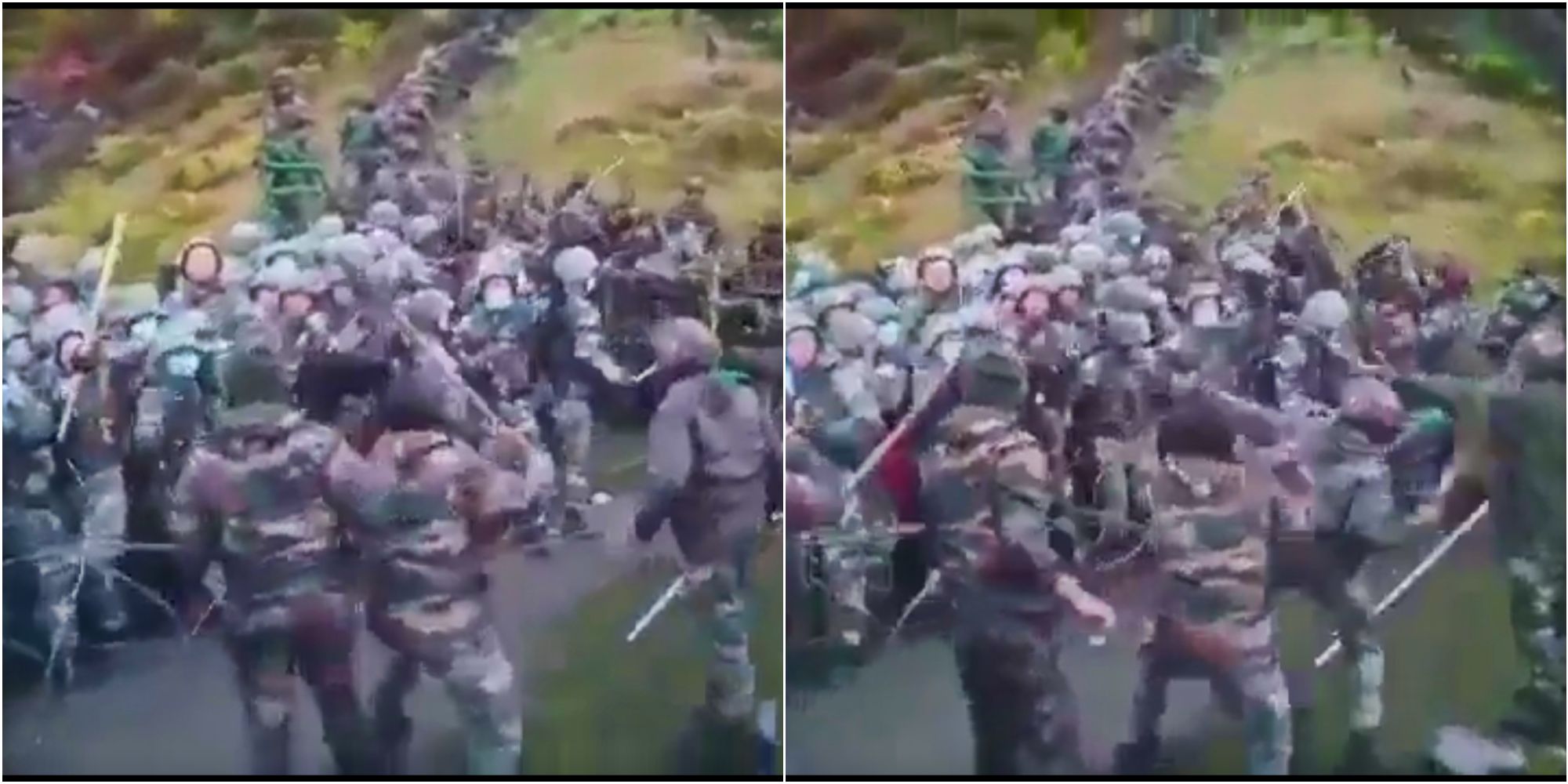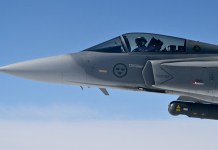China, the world’s second-most populous nation, is advancing its global ambitions through land and sea strategies. These efforts aim to expand territory and increase trade dominance without resorting to direct conflict. A key aspect of this approach involves using civilian forces as indirect support for military objectives.
Known for its expansionist policies, China is not only focused on becoming a world superpower but is also strategizing on how to seize neighboring lands without engaging in direct conflict. To achieve this, the Chinese military takes indirect support from civilian forces, who are often used as a shield by the People’s Liberation Army (PLA).
Examples of this include the “Xiaokang” border defense villages and the Maritime Militia, which are nontraditional forces involved in gray-zone operations.
These operations—employing nontraditional methods to achieve security objectives without provoking armed conflict—are frequently discussed in military literature. Let’s explore in detail how civilian forces are used to support China’s military efforts on both land and sea.
Border Defense On Land: “Xiaokang” Villages
On its land borders, particularly along the disputed Line of Actual Control (LAC) in the Middle and Eastern sectors of the India-China border, China has implemented the “Xiaokang” border defense village initiative.
The term “Xiaokang” translates to “moderately prosperous.” The Xiaokang initiative is designed to populate the 21 Himalayan border counties, including Nyingchi, Shannan, Shigatse, and Ngari prefectures. The plan includes the construction of new Xiaokang houses, infrastructure, and public service facilities in these areas to strengthen and enrich the border regions of Tibet.

This initiative involves villages in Tibet, including Zhuangnan, Yarao, Kuiqiongmen, and Majiduncun, which commonly feature military or dual-use facilities.
Notably, the Xiaokang border plan seeks to populate these areas with individuals loyal to the Chinese Communist Party (CCP), creating a civilian border force through China’s military-civilian fusion strategy, which has been increasingly emphasized under Xi Jinping’s leadership.
Over the past five years, China has developed more than 600 villages along its border with India in the Tibet Autonomous Region. Since 2019, China has been building villages along the LAC, and while many of these were initially unoccupied, they have recently seen new residents.
Some of these villages are located along the LAC, opposite the Lohit Valley and the Tawang sector of Arunachal Pradesh, a region administered by India but largely claimed by China as “South Tibet.” By populating and re-populating these border areas, China appears to be strengthening its territorial claims by establishing a “settled population” in disputed regions.
China is rapidly upgrading these dual-use villages along disputed borders. New roads and what may become small security outposts are being constructed between these remote villages. Given China’s focus on military-civilian fusion, these Xiaokang border villages are expected to serve as forward posts for troop deployment.
The extensive network of roads and the active civilian force near the border would function as a defense force, providing resources and support in the event of border skirmishes, effectively turning these villages into extended troop cantonments near the LAC.
These villages, often accompanied by military and dual-use infrastructure, serve as a “Gray Zone” tool for China to assert and defend its claims in disputed areas. Commercial satellite images reveal the rapid and significant progress China is making in these border villages despite the harsh environment.
Media reports indicate that these complexes include barracks, perimeter walls, and radome/communications towers, suggesting the likely presence of China’s military, the People’s Liberation Army (PLA). It is also possible that these facilities are operated by the paramilitary People’s Armed Police (PAP). Under China’s Land Borders Law, both the PLA and PAP share responsibility for defending China’s borders from armed attacks or other encroachments.
Maritime Strategy: The Maritime Militia
At sea, China employs its Maritime Militia to support the People’s Liberation Army (PLA) in asserting territorial claims, particularly in the South China Sea. The Maritime Militia is often described as a shadowy armada, a fleet of vessels that appear to be ordinary fishing boats but can mobilize for military purposes.
The Maritime Militia has existed for decades, but under President Xi Jinping’s leadership, it has become more professional, better equipped, and increasingly militarized. Officially, the People’s Republic of China (PRC) defines its militia as “an armed mass organization composed of civilians retaining their regular jobs,” serving as a component of China’s armed forces and an “auxiliary and reserve force” of the PLA.

The Maritime Militia operates independently of the PLA Navy and China Coast Guard (CCG). It consists of citizens working in the marine economy who receive training from the PLA and CCG to perform tasks such as border patrol, surveillance, reconnaissance, maritime transportation, search and rescue, and supporting naval operations during wartime.
The Maritime Militia is composed of two main forces. The first is a ‘Professional Fleet’ of at least 100 purpose-built boats that appear to be fishing vessels but are stronger and equipped with military-grade technology.
The second fleet, known as ‘The Spratly Backbone Fishing Vessels’ (SBFV), consists of actual fishing boats drafted into China’s missions. These boats operate out of ports in Hainan and Guangdong. The professional fleet can fish when needed, but they often remain inactive and then cluster together at disputed locations. SBFV crews receive lucrative government fuel subsidies for militia missions.
The United States, a treaty ally of the Philippines, has repeatedly accused China’s Maritime Militia of violating international law to enforce China’s expansive and unlawful maritime claims. By deploying vessels in groups, China seeks to challenge the rules of freedom of navigation, bolster its maritime claims, secure vital resources, and extend its economic influence globally.
China’s overtly civilian distant-water fishing (DWF) fleets, affiliated to varying degrees with government agencies, have come under growing international scrutiny. These fleets are often visible on satellite tracking platforms, swarming around disputed areas.
Crews in both the professional and SBFV fleets are believed to include civilian fishers, sailors, and ex-military personnel recruited through Chinese government training programs. When engaged in militia activities rather than genuine fishing, these vessels typically operate with smaller crews of about five to six members, according to The Guardian report.
According to a research report published by International Law Studies, China’s Maritime Militia is a key instrument for peacetime power projection in the region, particularly as it guards China’s audacious maritime claim to over 90 percent of the South China Sea.
The philosophical foundation of this militia lies in the concept of the “people’s war,” which integrates civilian and military sectors. China believes that using a civilian militia composed of fishing vessels is a less provocative way to advance its strategic goal of regional hegemony.
During armed conflict, these vessels could conduct reconnaissance, gather intelligence for the PLAN, and engage in military deception, jamming, sealift, ship repair, and emergency rescue. The militia is also armed and may participate in more challenging maritime security operations, such as boarding foreign-flagged fishing vessels in contested waters.
Military-Civil Fusion Strategy
Both the Xiaokang villages and Maritime Militia exemplify China’s “military-civil fusion” strategy, which aims to integrate civilian and military sectors for national objectives.
This approach is formalized in China’s Land Borders Law, which emphasizes the role of local governments and civilian populations in border defense and security and urges them to “strengthen the construction of mass defense forces to maintain border security.”
A 2021 article in the official PLA Daily highlights the importance of enhancing border infrastructure and encouraging people of all ethnic groups to settle in border areas, protect their homeland, and develop their communities. This focus on integrating civilian villages into the military framework is a clear example of China’s “military-civil fusion” strategy, which seeks to merge the country’s economic and military development to advance national objectives.
Through these initiatives, China seeks to advance its territorial ambitions and global influence while minimizing the risk of direct military confrontation. This strategy represents a significant challenge to neighboring countries and international norms in both land and maritime domains.
- Shubhangi Palve is a defense and aerospace journalist. Before joining the EurAsian Times, she worked for E.T. Prime. In this capacity, she focused on covering defense strategies and the defense sector from a financial perspective. She offers over 15 years of extensive experience in the media industry, spanning print, electronic, and online domains.
- Contact the author at shubhapalve (at) gmail (dot) com.




